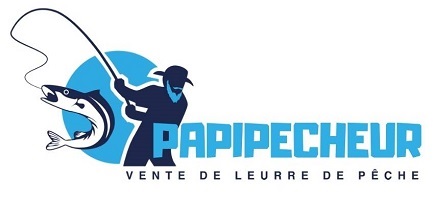What makes a great popping cork for speckled trout and redfish? This guide explains all the features any angler should know to make the best choice possible.
More…
I’ve never created a guide like this one because, well, doing so just seemed so difficult.
How could one possibly choose the best popping cork? There are just so many out there.
Besides, a good argument exists that there are far better ways to catch speckled trout and redfish than using a popping cork.
I’d go so far as to say that fishing with a cork is more of an introductory way to inshore fishing!
But fact of the matter is the popping cork is a mainstay in any inshore angler’s tackle box.
Surely people notice this so is it any surprise they cannot help but ask, « Hey, why do you use that one over all the others? »
It’s a good question and the reason why I’ve finally created this guide. Most of the popping corks you see here are models I’ve fished with and this guide is built from those years of experience.
Tables des matières
Best Popping Cork For Speckled Trout And Redfish?
Catch me on any fishing trip for speckled trout and redfish in Louisiana, and I will always have a spinning rod rigged up with a popping cork. Always.
That’s because it’s a versatile tool that has proven itself and stood the test of time.
So which popping cork is best for catching speckled trout and redfish?
The answer: it really depends on you and your needs.
Those range from fishing conditions to your own personal situation and, in order to identify those needs, let’s begin with what a popping cork’s job is in the first place.
What is a popping cork’s job?
The answer could be simplified as: to alert fish to nearby bait then alert you when the fish takes the bait.
To meet these needs popping corks come in many designs, shapes and sizes, the majority of which we will explore below.
Learn them and you will be able to decide what is best for you.
You will find that no single cork fits every scenario you can possibly fish.
Ultimately, it will take time on water to build experience and learn what you really do prefer.
That’s part of the fun! Inshore fishing is a journey, and not a destination.
Learning Popping Cork Design
To meet the many needs of inshore anglers, popping corks come in various designs, shapes and sizes.
Let’s take a look at these:
Weight
Some popping corks come weighted, others don’t.
This can be important to you because (generally speaking) heavier rigs or lures are easier to cast.
If you’re not sure how heavy you should go, you should check the lure weight rating on your rod, as described in this guide to choosing the best fishing rod for inshore fishing.
Typically, you will find that most weighted popping corks weigh about 3/4 ounce.
Which color is best on a popping cork?
I wouldn’t say color has an impact on the fish so much as it does you, the angler.

Most people have a hard time seeing chartreuse popping corks in bright conditions, especially in any kind of sun sparkle reflecting off the water’s surface.
Some people say that green is not bright enough, while most find that bright red or orange is the perfect balance.
I’d use different popping cork colors to help customers identify « their » rod during a fishing trip, so they could get bait in the water faster, instead of debating which rod belongs to who (and wasting valuable fishing time).
How color selection works for color blind people, I do not know.
So, if you’re color blind and know a color that works well for you then please share in the comments at the end of this guide!
Swivels
It is pretty much mandatory to have a swivel attached to at least one end of your cork to keep twist out of your main line.
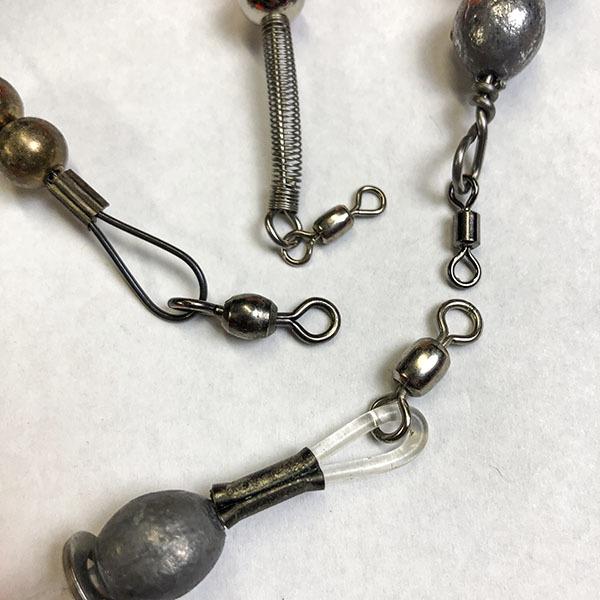
Line twist is bad, reducing casting performance, causing wind knots and worse!
Sure, swivels help keep it away, but I still recommend that you regularly de-twist your fishing line using these instructions.
How Your Popping Cork Attaches: Stem vs Clip-On vs Wrap-On vs Slip
Generally, you will come across four kinds of popping cork that are differentiated by how they attach to your main line. They are:
- stem corks
- clip-on corks
- slip corks
- wrap-on corks
Stem Corks
Stem corks are defined by their stem running through their center with loops at each end to tie your main line and leader line.
This stem is usually a light wire with a loop twisted in each end to tie your main line and leader to.
However, these stems are easily bent and, once they are, never seem to perform the same again, even after being bent back in place.
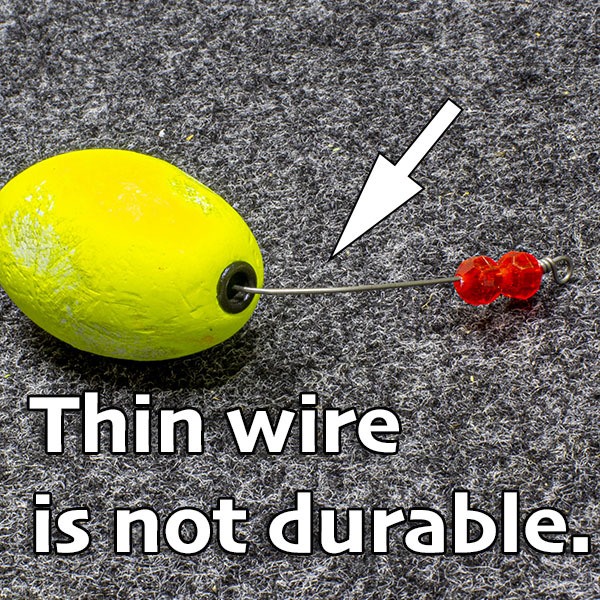
Because of this, some tackle manufacturers have opted for a heavy duty wire that is less likely to bend when hooked up to a strong fish.
This is what you see on Four Horsemen popping corks. They are far less likely to bend and – if they do – it is not so bad that its action is compromised.
Other tackle manufacturers have opted for a flexible wire, which is smart, but it seems they do not create the same smacking sound as a stiff wire because the cork and beads do not readily fall down a flimsy wire.
Corks equipped with a flexible wire tend to be secured with crimps on each end, adding a potential weak point.
If that crimp was made on a Friday, you can count on it breaking at an inopportune time.
It’s worth noting that other manufacturers (like Boat Monkey Floats) will use a length of high-strength monofilament as a flexbile stem (which is pretty darned smart if you ask me).
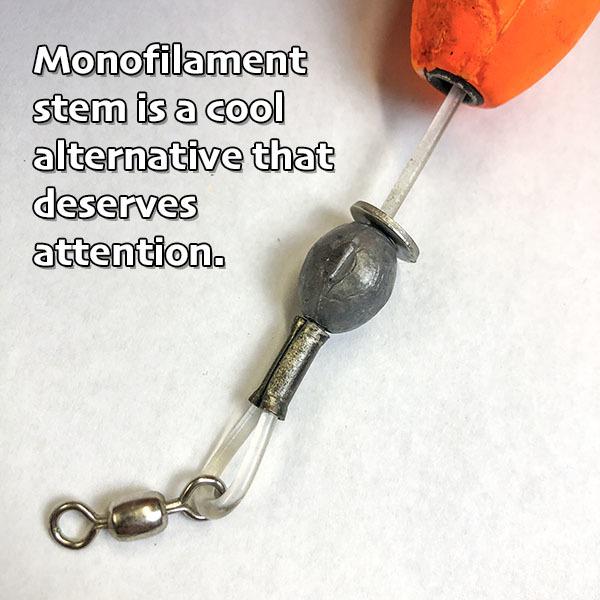
Wrap-On Corks
The stem on these corks is almost always made from plastic and features a hollow center that allows this cork to double as a slip cork (that you will read more about shortly).
Your fishing line can be wrapped around the stem and inserted in the body, making the cork detachable.
However, you should know that this design is largely outdated and the cork tends to accidentally come off after extensive use.
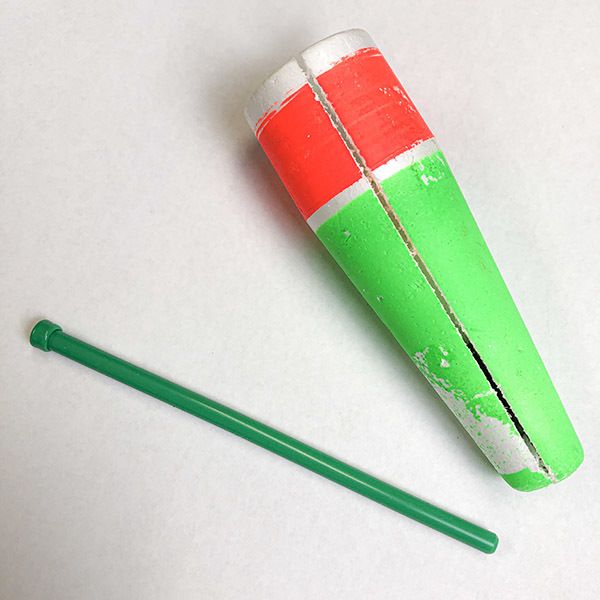
I fished with them a bunch when I was a kid, but no longer do.
Other Wrap-On Designs
You should know that there are other wrap-on designs, like what you see in the Versamaxx popping corks.
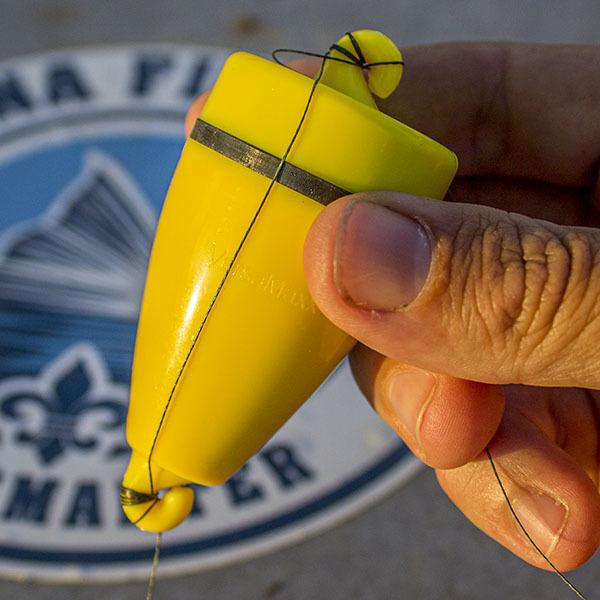
The Versamaxx Bolt features a small spool on its bottom that allows you to make on-the-fly adjustments in leader length between casts.
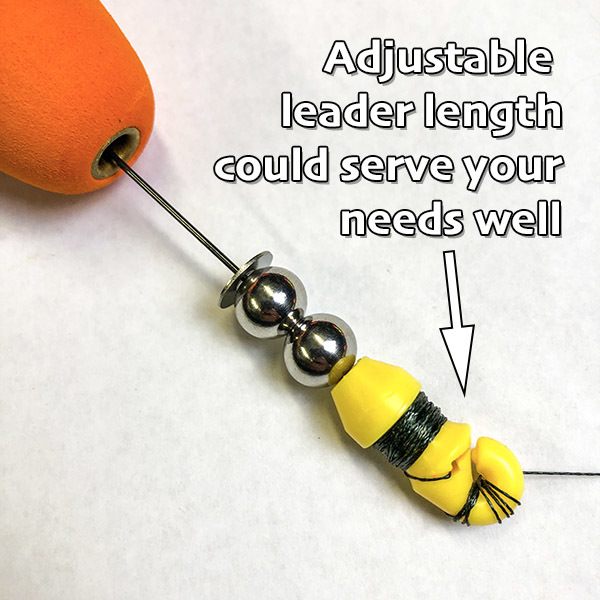
Slip Corks
This kind of popping cork is not designed to attach to your main line, but rather let it pass through it (where a stem would normally go).
A bobber stop and bead is used to catch the slip cork and, depending on where you put it, determines the depth of your bait.
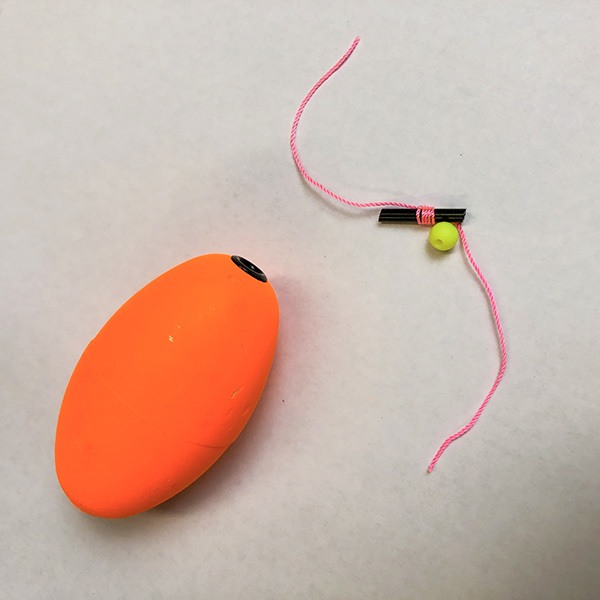
This allows you to fish deeper water without having to cast an obnoxiously long leader line.
Slip corks don’t really fall into the same category as all the other popping corks listed here, but they are worth explaining because you will see them at the tackle store.
After all, this guide is designed to give you the information you need to make the best purchase for yourself, right?
Clip-On Corks
The clip-on cork has stood the test of time as the « go to » for inshore anglers.
It is easily attached and removed, making a single rod count as two.
That is why I employ clip-on corks with the Inshore Rig, it’s easy to fish the top and bottom of the water column.
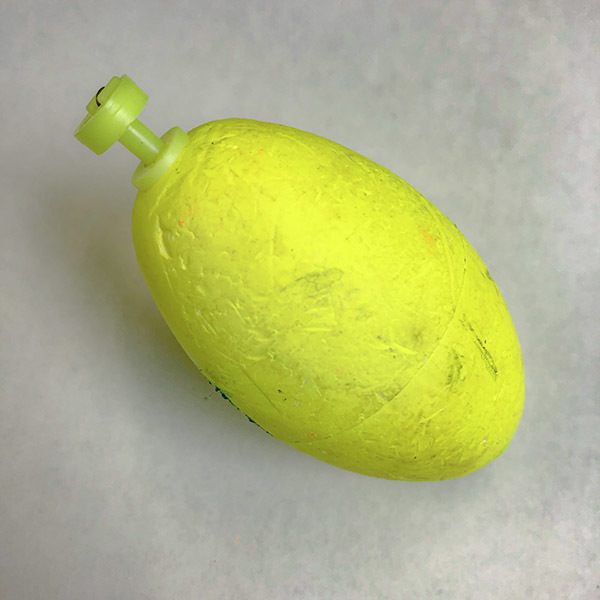
While they are more economical compared to other corks in this guide, it’s best to purchase a bag of them, rather than one at a time, because they are not as durable as they could be.
Popping Cork Material
This may sound crazy to you, but not all popping corks are made of cork!
The majority of what you see in stores are actually made from a dense Styrofoam.
You also see corks made from plastic, but they tend to weigh too much and are prone to cracking and leaking.
Experience has revealed to me that you really don’t want plastic!
Popping Cork Shape: Cup vs Oval
This is another aspect of popping corks that inshore anglers love to discuss.
Popping corks featuring a cup tend to move more water when popped (making more noise), whereas oval corks are more subtle.
So, with this in mind, it makes sense that cup-shaped corks are more easily heard by fish during periods of loud noise, like a windy day or in the immediate area of a natural gas platform.
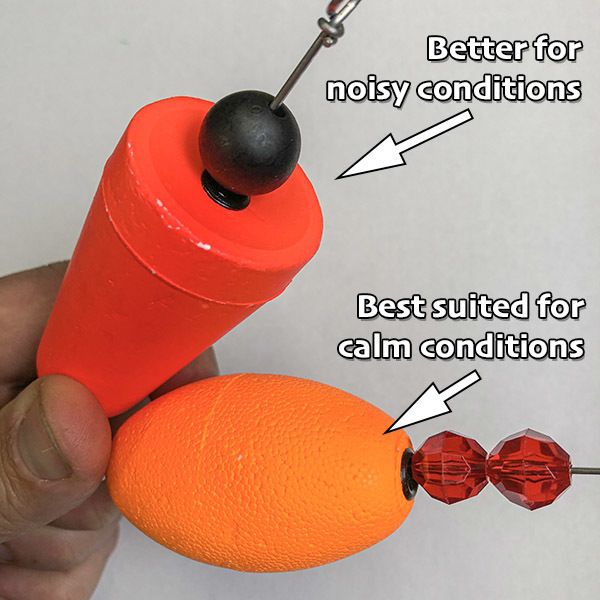
However, flat calm days present a different scenario: it’s so quiet that a cupped cork may not appeal to fish as much as something more subtle, like an oval-shaped cork.
Rattle, Clack or Silent?
I feel this falls into the same noise scenario as cupped vs oval shaped corks.
It’s generally accepted that you want some kind of a rattling or clacking noise in your popping cork, and there are more than one design to facilitate those fish-attracting noises.
Small beads inside a hollow body are pretty common. Unsurprisingly, these are also referred to as « rattling corks ».
Sliding plastic beads – like what you’d find in kids jewelry or Mardi Gras beads – is a design widely found throughout stores, but these tend to feature that thinner wire easily bent by redfish.
Inshore anglers can get pretty crazy with rattles, going so far as to create two-piece corks allowing for the customization of its rattles, such as the Versamaxx.
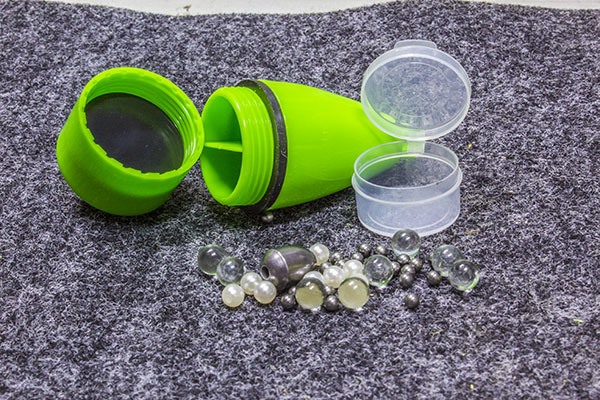
The Versamaxx rattling cork is highly customizable, but I cannot tell you that it makes such a big difference over other designs.
Popping corks such as the Four Horsemen feature large ceramic beads that take the place of smaller beads, making a distinct *pop* noise unlike any other.
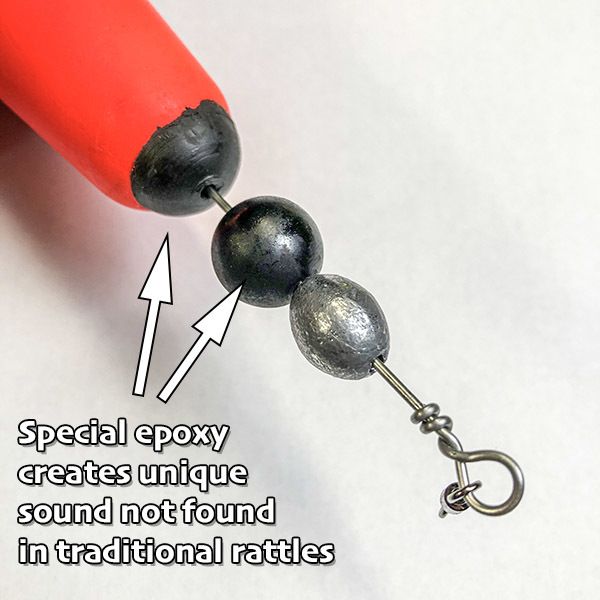
Of course, some popping corks do not possess these features and, for that reason, are better suited for a quieter presentation.
Tangle-ability
How easy can any particular cork tangle?
It’s something worth measuring, because time spent untangling a cork is time spent (you guessed it) not having a line in the water.
And, if your line is not in the water, then your chances of catching a fish are much lower.
I know this seems obvious, but little tidbits of non-fishing time spent here and there really do add up, and that final sum really does make a big difference as to how your day could have gone.
How easily can a cork tangle?
Long stems and other hardware line can snag on or get wrapped around will definitely make a popping cork more likely to tangle.
Sure, you can use thick monofilament leaders above and below the cork to reduce tangling, especially if you’re spooled with flimsy braided fishing line such as PowerPro, but that only works so well.
It’s better to have a cork that doesn’t tangle much in the first place.
While I am friends with the owner of Matrix Shad, I can tell you without bias that they made their cork with a shorter stem, specifically for the purpose of reducing tangled line.
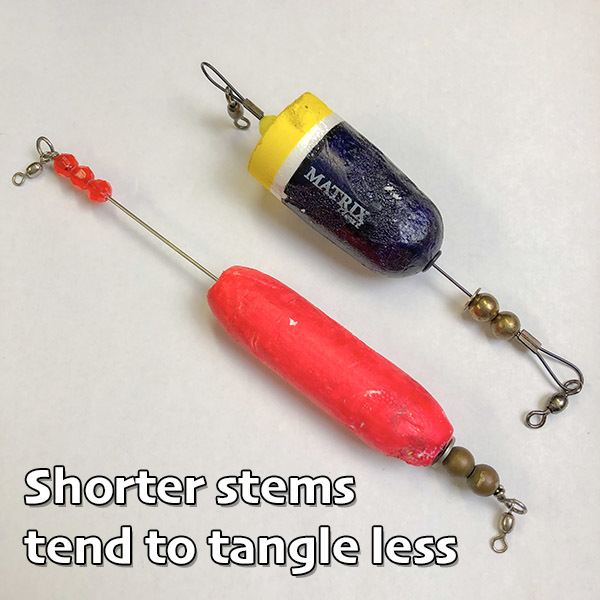
This way you are getting more casts in, and more casts equal more fish.
Now, we covered a lot, so let’s ask again the question that (most likely) brought you here in the first place:
Which popping cork is the best?
By now it is obvious that there is no single answer to that question, not one that will suit every inshore angler in every situation.
The answer to that question really depends on which of the above features you want to have when fishing for speckled trout and redfish.
I think it is a good idea that you take time to learn those features and make the best decision for yourself (then tell us why in the comments below).
My Overall Favorite Popping Cork
I’ll tell you that my favorite all-around cork is a cupped Four Horsemen in bright orange.
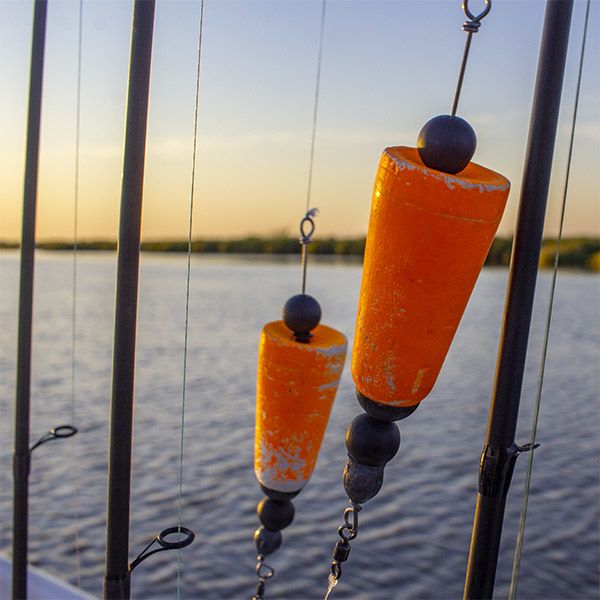
If I didn’t love these corks so much then I wouldn’t use them as often as I do.
They’ve been good to me, and you can count on one being tied on if I have a rod rigged for a popping cork for several reasons:
- they are durable
- the stem is hard to bend
- they have a unique sound
- they are easy to rig
- they tangle less often
I also prefer this design because I use rods that are dedicated to fishing a cork. The Four Horsemen’s design would not be a good fit for a rod intended to fish both the top and bottom of the water column because it is not removable.
But it is important to note that the Four Horsemen design is original, and the man who designed them is an accomplished fishing guide with plenty of fishing pictures to prove he knows how to catch limits of speckled trout and redfish.
Captain Aaron Pierce built one helluva popping cork! If it were not, so many wouldn’t have made the effort to implement his design into their own.
After all, isn’t imitation the sincerest form of flattery?
Of course, it goes without saying that there’s more to catching fish than tying on a piece of tackle and that’s why I think Captain Aaron would agree with what I have to say below:
What Really Matters When It Comes To Catching Fish All The Time Like A Professional Angler
Honestly, this is a tough guide to write, because it is very easy to split hairs and get caught up in the nuances of « what if this » or « what if that ».
If you haven’t been catching fish, I highly doubt it’s because of the cork you’re throwing.
It’s more likely that you’re not on biting fish in the first place, or are simply failing to get the bait to where they can see it.
I am telling you with 100% certainty that there is no cork feature in the world that will ever beat being able to find a ton of biting fish.
If you can do that, it will not matter what stem, clip, bead, rattle or doohickey is on your popping cork because the fish will be hitting whatever enters the water.
So long as there is a hook attached, you will be fine.
No, you do not need a bunch of fishing buddies who are always on the water telling you where they were biting yesterday.
You can learn how to find your own fish, based on the conditions and completely from scratch, without help from anyone showing you where to go fishing.
It’s a process taught inside LAFB Elite, a special membership for anglers looking to knock years off their learning curve.
It’s a great way to save money and get to what really counts: catching fish and having fun!
Not ready to make the leap?
Then consider signing up for my FREE course, the Elements of Effective Fishing, so you don’t leave biting fish for the next guy who knows what to do!
What do you use?
If you made it this far, then thank you for reading my guide on popping corks!
It’s a big topic to cover so, if you have something to add, then I’d love to see it!
Which cork do you use? Why? How many fish have you caught on it?
I look forward to chatting with you about in the comments below.
